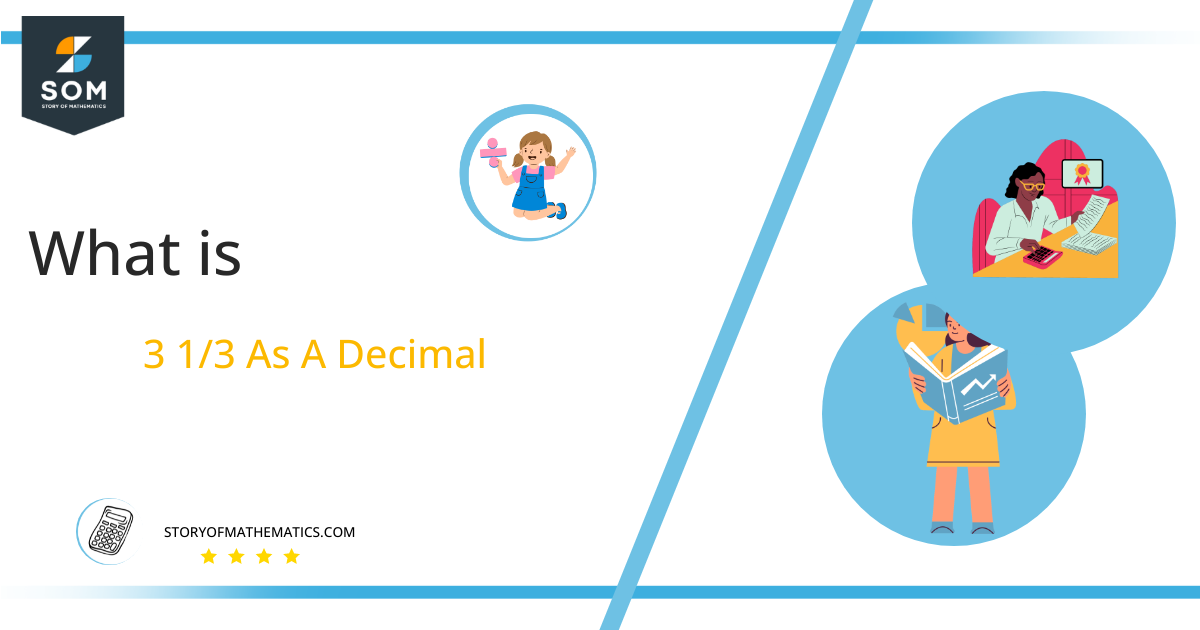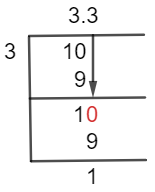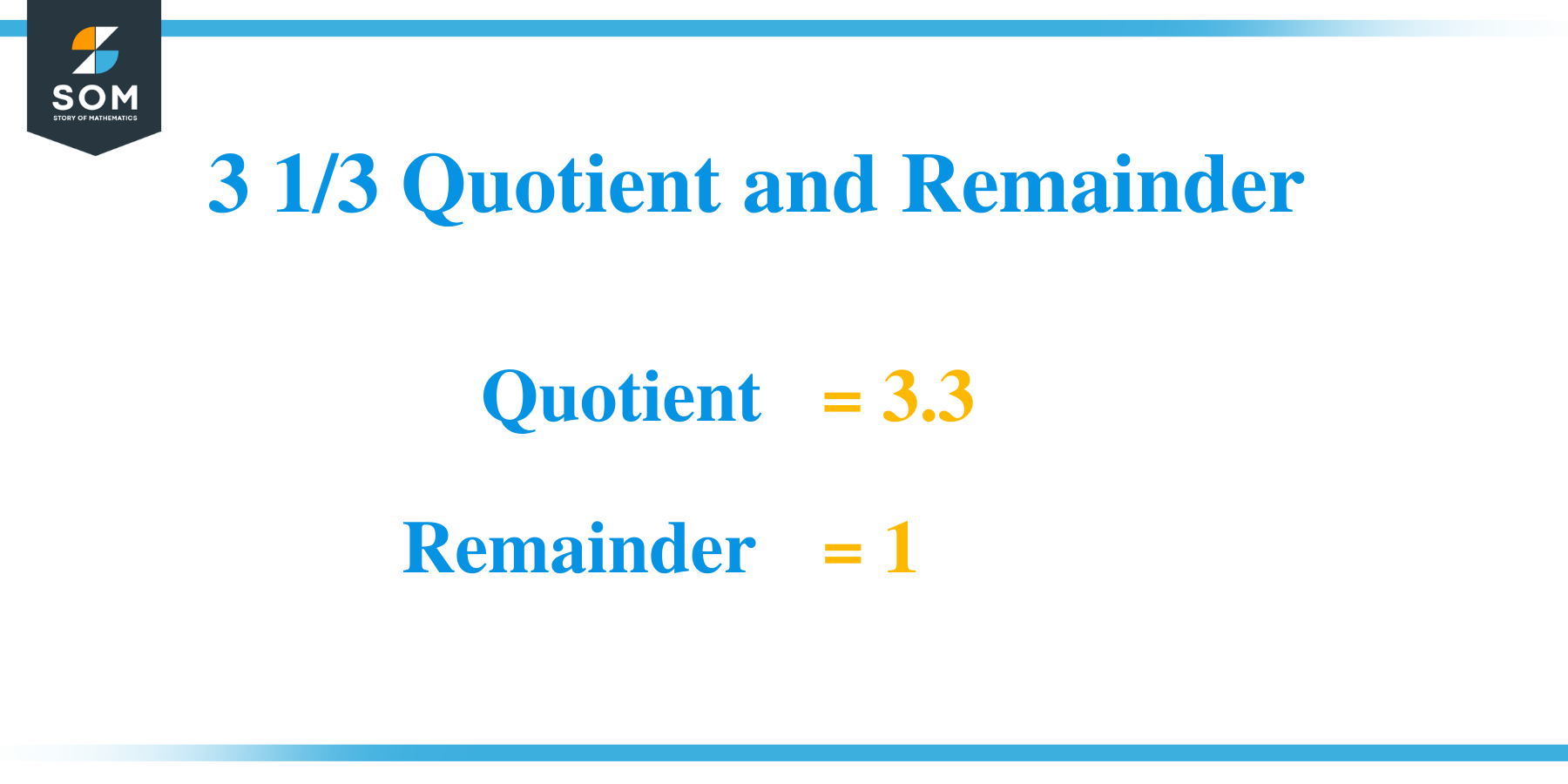What Is 3 1/3 as a Decimal + Solution With Free Steps

The fraction 3 1/3 as a decimal is equal to 3.333333333.
Fractions are converted to decimal values because Decimal values are more useful in mathematical problems and decimal values are easier to understand. Generally, we represent the fraction in p/q form, where p in the fraction is the numerator and q in the fraction is referred to as the denominator.
We can classify fractions into three different types: improper fraction, proper fraction, and mixed fraction. When we have a case of the numerator being greater than the denominator, the fraction is known as an Improper fraction.
In contrast, when the fraction’s numerator is less than the denominator, such a fraction is referred to as a Proper fraction. When we have a whole number with an improper fraction, we call the fraction a Mixed fraction.
When we convert fractions into decimal values, we use the Division operator, and division is one of the most challenging operators among all mathematical operators. But we can make it simple by using an approach called Long Division. It is a method used to convert fractions into their decimal values. So here we are, solving our mixed fraction of 3 1/3 using the long division method.
Solution
Before heading towards a solution, first, we need to convert the given mixed fraction into the p/q form. For that, we will multiply the denominator with the whole number and then add the numerator to it. This will produce the p of the fraction while the denominator remains the same. So, by doing so, we now have a fraction of 10/3.
For the long division method, the terms “Dividend” and “Divisor” are used for the numerator and denominator, respectively. So for the fraction that we are going to solve by the long division method, the dividend and the divisors are:
Dividend = 10
Divisor = 3
The term “Quotient” is used to express the answer of the fraction in decimal form.
Quotient = Dividend $ \div $ Divisor = 10 $ \div $ 3
The solution by long division is as under:
Figure 1
10/3 Long Division Method
The fraction we had:
10 $ \div $ 3
The numbers can be divided directly because we have a case of a greater dividend than the divisor.
The term “Remainder” is used for the number that is left when two numbers are not completely divisible by each other.
10 $ \div $ 3 $ \approx $ 3
Where:
3 x 3 = 9
After the first step, we have a remainder of 10 – 9 = 1. To proceed further, we will add zero to the right side of the remainder, and now our remainder becomes 10, but for this, we will also add a decimal point to the quotient.
10 $ \div $ 3 $ \approx $ 3
Where:
3 x 3 = 9
Here, we have the Remainder of 1. So we have a Quotient of 3.3 for the given mixed fraction of 3 1/3.

Images/mathematical drawings are created with GeoGebra.
